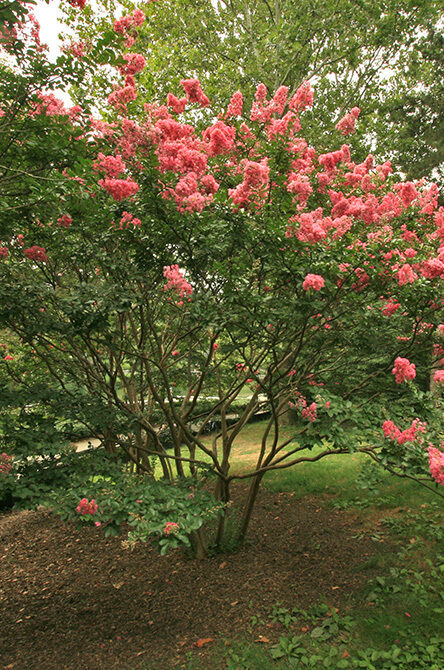Crepe myrtle trees, with their vibrant blooms and elegant forms, are cherished additions to urban landscapes, including New York City. The correct spelling in the United States is “crape myrtle,” and these trees are known scientifically as Lagerstroemia. They are especially valued for their colorful and long-lasting flowers, smooth bark, and attractive foliage. Effective pruning is crucial to maintain crape myrtle trees’ health, shape, and flowering capability. This guide provides a detailed approach to pruning these trees, ensuring they thrive in New York City.

Understanding Crape Myrtle Trees
Crape myrtles are deciduous trees known for their extensive blooming period and exfoliating bark. They can be evergreen in warmer climates but typically behave as deciduous plants in temperate zones like New York City. Here are some key features:
- Flowers: Crape myrtles produce crinkled, crepe-paper-like flowers in a range of colors from white to deep red and purple, blooming from summer into fall.
- Bark: Their smooth, peeling bark reveals a patchwork of colors beneath, providing winter interest.
- Foliage: Leaves are alternately arranged and vary in color across different varieties, from green to burgundy.
- Size and Form: They range from small shrubs to trees up to 30 feet tall, often with a rounded to vase-shaped growth habit.
- Adaptability: Crape myrtles are adaptable to various soils and environmental conditions, thriving best in full sun and well-drained soils. They are drought-resistant once established but perform best with regular moisture.
Pruning Objectives
Pruning crape myrtle trees in an urban setting like New York City focuses on maintaining their health and enhancing their natural form while ensuring they fit into the available limited space. The objectives include:
- Health: Removing dead, diseased, or damaged branches to prevent decay and encourage vigor.
- Shape: Maintaining a pleasing form while controlling size to suit urban gardens and parks.
- Blooming: Promoting abundant flowering by removing old blooms and encouraging new growth, which bears flowers.
- Safety: Preventing damage to property or passersby from broken branches or overgrowth.
Step-by-Step Guide to Pruning Crape Myrtles
- Timing: The best time to prune crape myrtles is in late winter or early in the spring before new growth starts. This timing helps prevent frost damage to new cuts and allows for vigorous spring growth.
- Tools: Prepare with sharp, clean pruning shears, loppers, and a pruning saw for larger branches. Ensure tools are disinfected if used on diseased plants.
- Assessment: Start by assessing the tree’s overall structure. Look for dead, damaged, or diseased wood, which should be removed first.
- Thinning: Thin out small branches inside the canopy to improve air circulation and enhance light penetration, which are crucial for reducing disease risk and enhancing bloom production.
- Shaping: Shape the tree by selectively pruning back leggy branches to buds facing the outside of the canopy. This technique encourages outward growth, enhancing the tree’s form.
- Reduction: If necessary, reduce the tree’s height by pruning back to a lateral branch or a bud. Avoid “topping” the tree, leading to weak growth and poor flowering.
- Cleanup: Remove all pruned material from around the tree’s base to prevent disease and discourage pests.

Common Mistakes to Avoid
- Over-pruning: Removing too much of the tree at once can stress the tree, reduce flowering, and lead to a less healthy plant.
- Wrong timing: Pruning too late in the season can lead to new growth vulnerable to early frosts.
- Improper cuts: Make cuts at a 45-degree angle just above buds or branching points, and avoid leaving stubs, which can become entry points for pests and diseases.
Conclusion
Pruning crape myrtle trees in New York City involves enhancing their aesthetic appeal and ensuring they remain healthy and well-suited to their urban environment. Following these guidelines, city gardeners and landscapers can help these beautiful trees reach their full potential, providing year-round interest and vibrant summer blooms.
